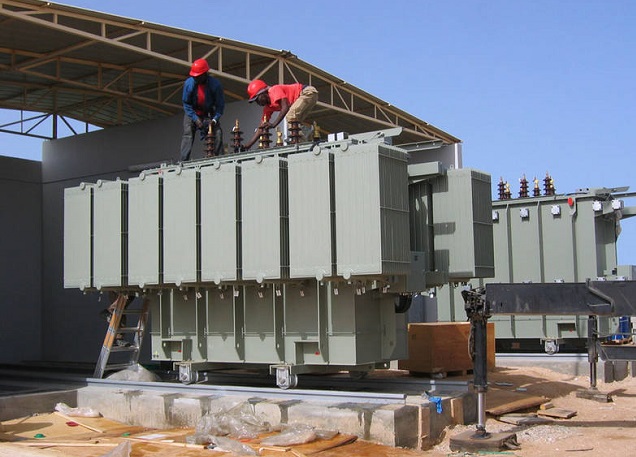Transformer installations are critical components of electrical infrastructure, ensuring efficient power distribution across various sectors. The integrity and performance of these transformers are paramount, necessitating rigorous testing before, during, and after installation. Special tests for transformer installations play a crucial role in ensuring safety and reliability, helping to identify potential issues and verify the equipment’s operational readiness.
Importance of Special Tests in Transformer Installations
Special tests go beyond standard routine tests to assess specific performance criteria and ensure that transformers meet stringent safety and operational standards. These tests are designed to detect potential defects, validate design specifications, and ensure compliance with industry regulations. Here are some essential special tests conducted during transformer installations:
Impulse Test: Assessing Surge Withstand Capability
The impulse test simulates lightning strikes or switching surges to evaluate a transformer’s ability to withstand transient overvoltage conditions. By applying high voltage impulses, this test checks the insulation system’s robustness and identifies any weaknesses that could lead to failures during operation.
Temperature Rise Test: Ensuring Thermal Stability
The temperature rise test monitors the temperature increase in the transformer’s windings and oil under full load conditions. This test is crucial for verifying the cooling system’s efficiency and ensuring that the transformer can operate safely within its thermal limits. Proper thermal management is essential to prevent overheating, which can degrade insulation and reduce the transformer’s lifespan.
Acoustic Test: Measuring Noise Emission
Transformers can generate significant noise during operation, which may be disruptive, especially in residential or office areas. The acoustic test measures the sound levels emitted by the transformer under various conditions, helping to identify and mitigate noise issues. Implementing sound-damping materials and optimized enclosure designs can reduce noise pollution.
Partial Discharge Test: Detecting Insulation Defects
Partial discharge (PD) testing is a vital diagnostic tool for detecting insulation defects in transformers. PD activities can lead to insulation breakdown and eventual failure. By identifying and locating PD sources, this test helps in taking corrective actions to enhance the transformer’s reliability and longevity.
Dissolved Gas Analysis (DGA): Monitoring Oil Health
Dissolved Gas Analysis is a diagnostic test that examines gases dissolved in the transformer oil. The presence and concentration of certain gases can indicate issues such as arcing, overheating, or partial discharges. Regular DGA helps in early detection of faults, allowing for timely maintenance and preventing catastrophic failures.
The Role of Professional Services in Transformer Installations
Ensuring the successful implementation of these special tests requires the expertise of qualified professionals. Reliable Transformer Installation Services ensure that all tests are conducted accurately and in accordance with industry standards. These services typically include comprehensive testing, analysis, and documentation, providing a clear picture of the transformer’s condition and readiness for operation.
Choosing the Right Electric Solution Company
Selecting an experienced and reputable Electric Solution Company in India is crucial for achieving optimal results in transformer installations. Such companies bring extensive experience and specialized knowledge, ensuring that all aspects of the installation process, including special tests, are handled with precision and care. They also provide valuable insights and recommendations based on the latest industry practices and technological advancements.
Key Considerations for Transformer Installation
To ensure the effective performance and safety of transformers, several key considerations must be taken into account during the installation process:
Site Preparation and Planning
Proper site preparation is fundamental for a successful transformer installation. This includes selecting an appropriate location, ensuring a stable foundation, and implementing adequate ventilation and cooling systems. Detailed planning helps in anticipating and mitigating potential issues, ensuring a smooth installation process.
Adherence to Safety Standards
Compliance with national and international safety standards is non-negotiable. These standards dictate the procedures and specifications for transformer installations, ensuring that all safety protocols are followed. Regular inspections and audits help in maintaining compliance and addressing any deviations promptly.
Regular Maintenance and Monitoring
Ongoing maintenance and monitoring are essential for sustaining the performance and reliability of transformers. Scheduled inspections, testing, and maintenance activities help in identifying and addressing issues before they escalate. Advanced monitoring systems can provide real-time data on the transformer’s condition, enabling proactive maintenance strategies.
Conclusion
Special tests are integral to ensuring the safety and reliability of transformer installations. By meticulously conducting tests such as impulse testing, temperature rise testing, acoustic testing, partial discharge testing, and dissolved gas analysis, potential issues can be identified and rectified, ensuring the transformer’s optimal performance.
Partnering with experienced professionals for Transformer Installation Services and choosing a trusted Electric Solution Company in India are crucial steps in achieving successful transformer installations. These experts bring the necessary expertise, tools, and methodologies to ensure that every aspect of the installation process is handled with precision and care, delivering reliable and efficient electrical infrastructure solutions.
By prioritizing thorough testing and professional installation, organizations can ensure the long-term reliability and safety of their transformer systems, supporting their critical operations and enhancing overall electrical infrastructure resilience.

